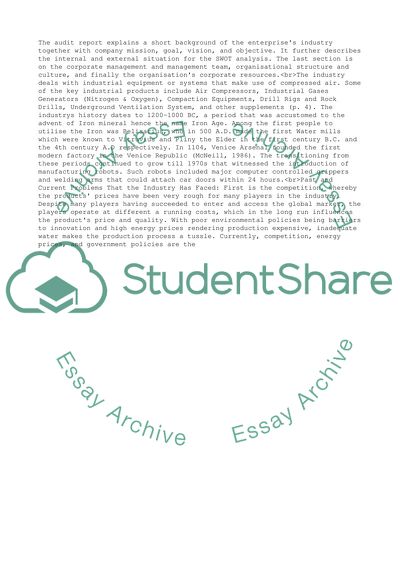Cite this document
(Atlas Copco Group's Strategic Audit Essay Example | Topics and Well Written Essays - 2500 words, n.d.)
Atlas Copco Group's Strategic Audit Essay Example | Topics and Well Written Essays - 2500 words. https://studentshare.org/finance-accounting/1855168-atlas-copco-groups-strategic-audit
Atlas Copco Group's Strategic Audit Essay Example | Topics and Well Written Essays - 2500 words. https://studentshare.org/finance-accounting/1855168-atlas-copco-groups-strategic-audit
(Atlas Copco Group'S Strategic Audit Essay Example | Topics and Well Written Essays - 2500 Words)
Atlas Copco Group'S Strategic Audit Essay Example | Topics and Well Written Essays - 2500 Words. https://studentshare.org/finance-accounting/1855168-atlas-copco-groups-strategic-audit.
Atlas Copco Group'S Strategic Audit Essay Example | Topics and Well Written Essays - 2500 Words. https://studentshare.org/finance-accounting/1855168-atlas-copco-groups-strategic-audit.
“Atlas Copco Group'S Strategic Audit Essay Example | Topics and Well Written Essays - 2500 Words”. https://studentshare.org/finance-accounting/1855168-atlas-copco-groups-strategic-audit.


